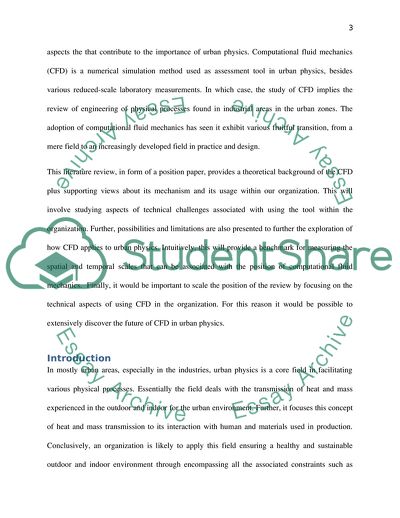Cite this document
(Literature review/Position paper on Computational Fluid Dynamics review Example | Topics and Well Written Essays - 2000 words, n.d.)
Literature review/Position paper on Computational Fluid Dynamics review Example | Topics and Well Written Essays - 2000 words. https://studentshare.org/engineering-and-construction/1874749-literature-reviewposition-paper-on-computational-fluid-dynamics
Literature review/Position paper on Computational Fluid Dynamics review Example | Topics and Well Written Essays - 2000 words. https://studentshare.org/engineering-and-construction/1874749-literature-reviewposition-paper-on-computational-fluid-dynamics
(Literature review/Position Paper on Computational Fluid Dynamics Review Example | Topics and Well Written Essays - 2000 Words)
Literature review/Position Paper on Computational Fluid Dynamics Review Example | Topics and Well Written Essays - 2000 Words. https://studentshare.org/engineering-and-construction/1874749-literature-reviewposition-paper-on-computational-fluid-dynamics.
Literature review/Position Paper on Computational Fluid Dynamics Review Example | Topics and Well Written Essays - 2000 Words. https://studentshare.org/engineering-and-construction/1874749-literature-reviewposition-paper-on-computational-fluid-dynamics.
“Literature review/Position Paper on Computational Fluid Dynamics Review Example | Topics and Well Written Essays - 2000 Words”. https://studentshare.org/engineering-and-construction/1874749-literature-reviewposition-paper-on-computational-fluid-dynamics.


